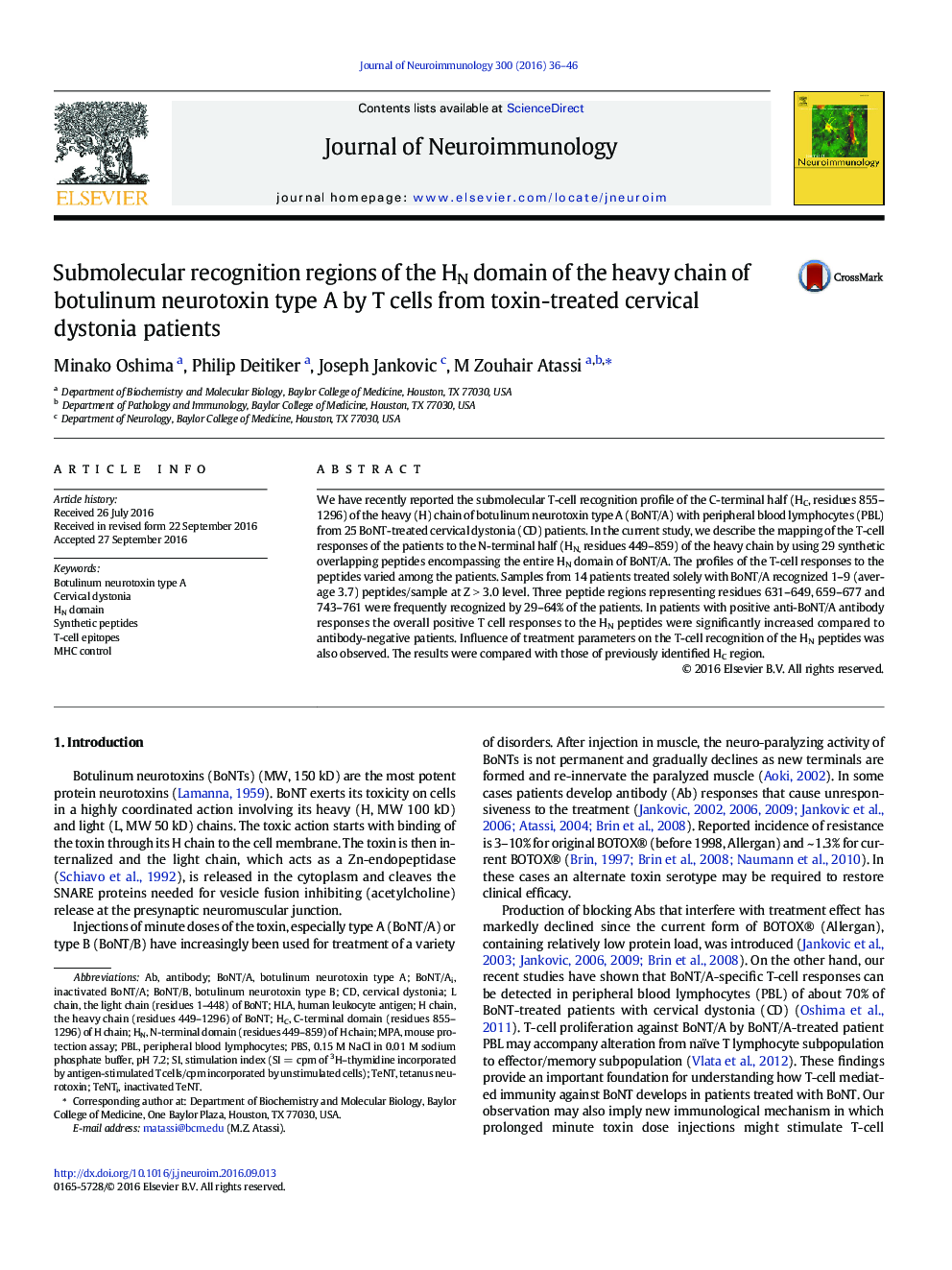| Article ID | Journal | Published Year | Pages | File Type |
|---|---|---|---|---|
| 5630291 | Journal of Neuroimmunology | 2016 | 11 Pages |
â¢In patients treated with BoNT/A, regions within peptides 631-649, 659-677 and 743-761 were frequently recognized by T cells.â¢T-cell responses to HN regions may tend to occur earlier than to HC regions.â¢Anti-BoNT/A Abs-positive patients had greater overall T-cell responses against HN peptides than the Ab-negative cases.â¢Number of HN-domain peptides recognized by T-cells was significantly smaller compared to number of recognized HC-peptides.â¢Ab + CD patients mounted significantly elevated T-cell responses toward HN regions but not toward the HC region.
We have recently reported the submolecular T-cell recognition profile of the C-terminal half (HC, residues 855-1296) of the heavy (H) chain of botulinum neurotoxin type A (BoNT/A) with peripheral blood lymphocytes (PBL) from 25 BoNT-treated cervical dystonia (CD) patients. In the current study, we describe the mapping of the T-cell responses of the patients to the N-terminal half (HN, residues 449-859) of the heavy chain by using 29 synthetic overlapping peptides encompassing the entire HN domain of BoNT/A. The profiles of the T-cell responses to the peptides varied among the patients. Samples from 14 patients treated solely with BoNT/A recognized 1-9 (average 3.7) peptides/sample at ZÂ >Â 3.0 level. Three peptide regions representing residues 631-649, 659-677 and 743-761 were frequently recognized by 29-64% of the patients. In patients with positive anti-BoNT/A antibody responses the overall positive T cell responses to the HN peptides were significantly increased compared to antibody-negative patients. Influence of treatment parameters on the T-cell recognition of the HN peptides was also observed. The results were compared with those of previously identified HC region.
Graphical abstractDownload high-res image (128KB)Download full-size image
